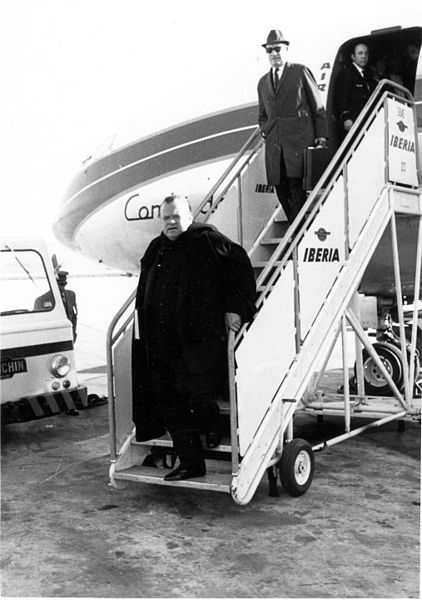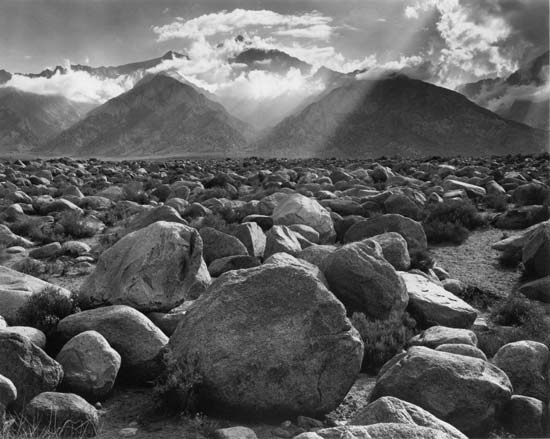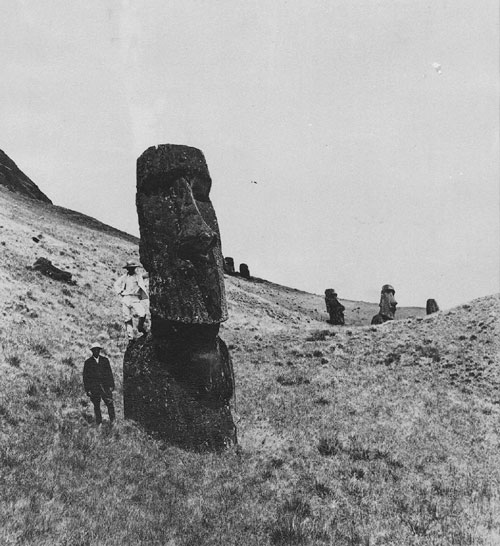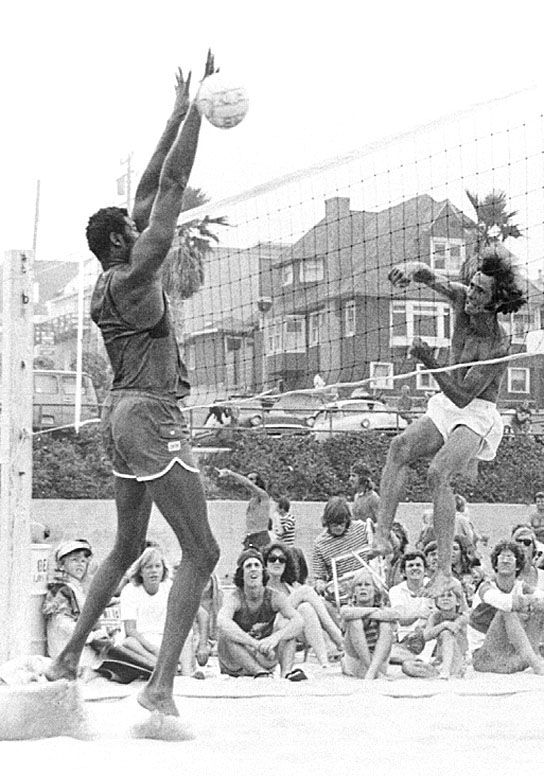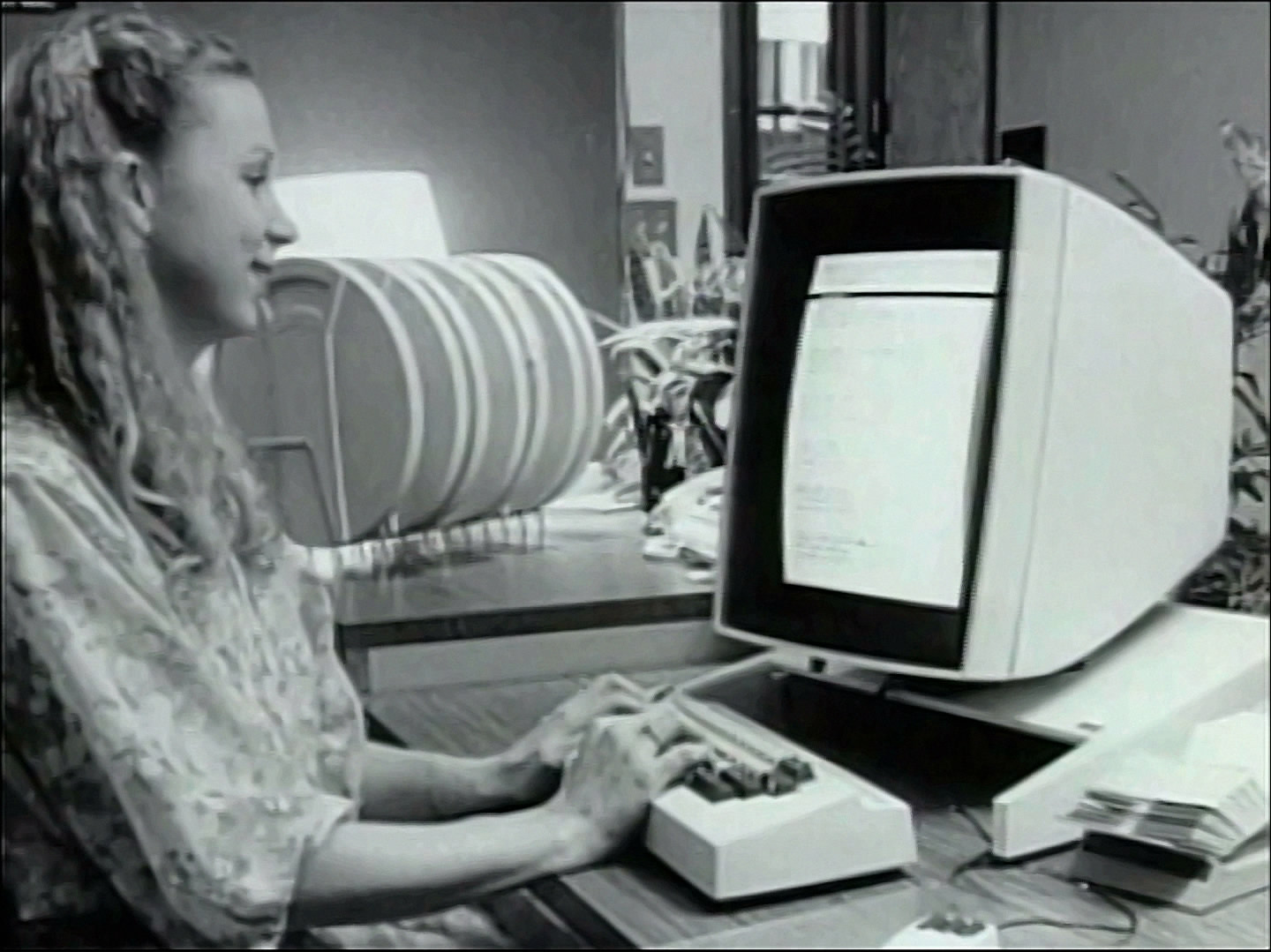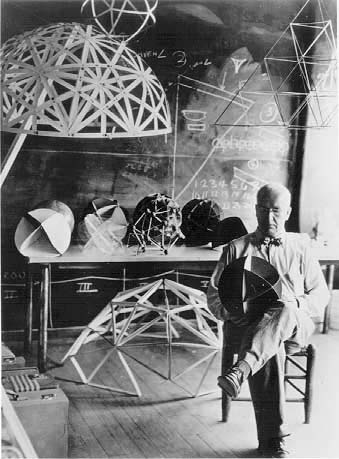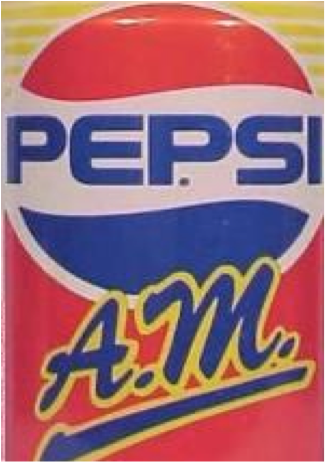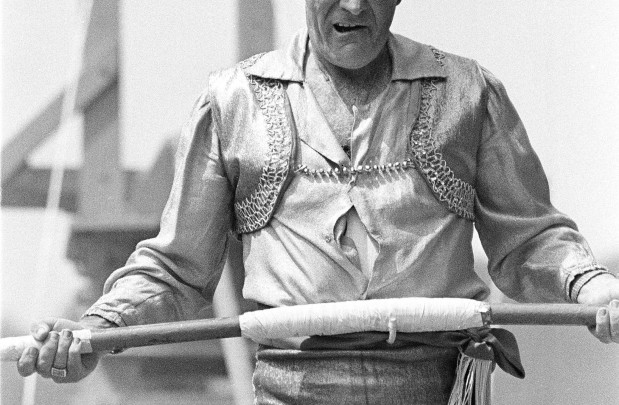Groucho, seemingly oblivious, sasses Ray Bradbury on You Bet Your Life, 1955.
You are currently browsing the archive for the Videos category.
Tags: Groucho Marx, Ray Bradbury
From Astra Taylor’s Examined Life, a section in which moral philosopher Peter Singer questions how we spend our money in a world of unevenly distributed plenty. Though I wonder if the free market isn’t part of the solution.
Tags: Peter Singer
A Japanese design engineering firm was tasked with creating a water bottle that would be effective in a post-apoclyptic landscape. Realizing that such environs would presuppose water scarcity, Takram took things several steps further, creating an alternative human organ system that would allow us to survive on a drastically reduced water intake. It may the future. You go first. An excerpt from the proposal:
“We were given a vision of cathartic future. A world in which humanity experiences a cataclysmic sequence of events that will bring us to the brink of annihilation. Afflicted by manmade causes, the rising sea level, radioactive emissions and release of hazardous materials into the environment, art and culture cease to exist. This provides an opportunity, not lament, to re-evaluate what constitutes art, design, culture and the quality of life itself when all prejudices and preconceptions vanish.
With this premise, Takram was tasked to design a water bottle. After a period of thorough research and analysis, Takram reached an uncanny solution. Our conclusion was that it would make more sense, in fact, to regulate how much water the human body can retain and recycle in this dire environment. This revelation resulted in the Hydrolemic system, a set of artificial organs.”
A 1983 California ad offering DeLoreans at the closeout price of $18,895.
More DeLorean posts:
Tags: John DeLorean
Iris scans are only the start of the souped-up technology at Dallas’ Love Field airport, which aims to make check-in a paperless, stopless process. From USA Today:
“At a terminal being renovated here at Love Field, contractors are installing 500 high-definition security cameras sharp enough to read an auto license plate or a logo on a shirt.
The cameras, capable of tracking passengers from the parking garage to gates to the tarmac, are a key first step in creating what the airline industry would like to see at airports worldwide: a security apparatus that would scrutinize passengers more thoroughly, but less intrusively, and in faster fashion than now.
It’s part of what the International Air Transport Association, or IATA, which represents airlines globally, calls ‘the checkpoint of the future.’
‘The goal is for fliers to move almost non-stop through security from the curb to the gate, in contrast to repeated security stops and logjams at checkpoints.'”
••••••••••
President Kennedy and the First Lady arrive at Love Field, November 22, 1963, less than an hour before he was assassinated.
Tags: Ansel Adams.
From “If They Could Only Talk,” Hannah Bloch’s new National Geographic article about the elemental questions we need to ask about Easter Island:
“Easter Island covers just 63 square miles. It lies 2,150 miles west of South America and 1,300 miles east of Pitcairn, its nearest inhabited neighbor. After it was settled, it remained isolated for centuries. All the energy and resources that went into the moai—which range in height from four to 33 feet and in weight to more than 80 tons—came from the island itself. Yet when Dutch explorers landed on Easter Sunday in 1722, they met a Stone Age culture. The moai were carved with stone tools, mostly in a single quarry, then transported without draft animals or wheels to massive stone platforms, or ahu, up to 11 miles away. Tuki’s question—how did they do it?—has vexed legions of visitors in the past half century.
But lately the moai have been drawn into a larger debate, one that opposes two distinct visions of Easter Island’s past—and of humanity in general. The first, eloquently expounded by Pulitzer Prize winner Jared Diamond, presents the island as a cautionary parable: the most extreme case of a society wantonly destroying itself by wrecking its environment. Can the whole planet, Diamond asks, avoid the same fate? In the other view, the ancient Rapanui are uplifting emblems of human resilience and ingenuity—one example being their ability to walk giant statues upright across miles of uneven terrain.”
••••••••••
Leonard Nimoy applies his spooky gravitas to Easter Island, 1977:
Tags: Hannah Bloch, Jared Diamond, Leonard Nimoy
Short profile of Alex Haley in 1977, after the novel Roots made him a household name. Previously best known as an ace interviewer for Playboy, Haley would later face charges of having plagiarized passages (which the author copped to as part of an out-of-court settlement). Whatever the origins of the work and despite a simplification of the subject, the novel and subsequent TV miniseries had a powerful effect in awakening America to its past.
Read also:
- Haley interviews Miles Davis. (1962)
Tags: Alex Haley
Eugene Selznick, who just passed away, was one of the fathers of American volleyball and no slouch at ballyhoo, either. He recruited basketball legend Wilt Chamberlain to play on a tour in the early 1970s, which helped further popularize the game and make it an Olympic sport. An excerpt from Selznick’s New York Times obituary, which was written by Paul Vitello:
“Chamberlain, the 7-foot-1 N.B.A. star, was near the end of his basketball career in the early 1970s when he took up beach volleyball to help rehabilitate his battered body. Selznick proceeded to cajole Chamberlain into joining him and other top players for a nationwide exhibition tour in the summer of 1973, the year he retired from basketball.
The publicity generated by the Chamberlain tour, as it was known, brought a new generation to volleyball and laid the groundwork for a boom in popularity that began in the ’80s. Beach volleyball became an official Olympic sport in 1996. Selznick coached the men’s Olympic beach volleyball team of Sinjin Smith and Carl Henkel to a fifth-place finish in Atlanta in 1996, and the women’s Olympic team of May-Treanor and McPeak to fifth place in Sydney in 2000.”
••••••••••
Home-movie footage from the Chamberlain-Selznick tour.
Chamberlain visits Ed Sullivan after scoring 100 points in a game, 1962.
If you want an apocalypse with amenities, Survival Condo is for you. While others are dying from infections to their searing flesh, you’ll be poolside below the earth in a luxury condo development. From D.C. Stewart’s new Discover piece about the post-apocalyptic playground:
“Larry Hall, a former software engineer who bought his 174-foot-deep hole in the ground from the government for $300,000 in 2008, plans to convert it to calamity-proof condos by 2013. The silo is one of 72 built across the country to deter a Soviet attack during the Cold War. Tucked into an empty stretch of rural Kansas, it once housed an Atlas F nuclear ballistic missile that could travel more than 7,000 miles. To withstand a Soviet strike, the silo’s concrete walls are up to nine feet thick. But it’s not some ‘dreary concrete basement hideaway,’ Hall assures visitors to his website, survivalcondo.com. It’s a place to enjoy ‘the coolness of a missile base, the protection of a nuclear-hardened bunker, and the features of a luxury condo.'”
••••••••••
“Well meet again / Don’t know where / Don’t know when”:
Tags: Larry Hall
Tags: Michio Kaku
Tags: Buckminster Fuller
For its 150th anniversary, Timex sponsored “The Future of Time,” a competition that imagined timepieces 150 years from now. One entry was a thumbnail watch. From the competition copy: “TX54 is a disposable timepiece that is worn on the user’s thumbnail. While its translucency makes it blend seamlessly with the hand, a selection of text color options and a glow feature that activates on command make it easy to read.”
••••••••••
Live Timex commercial for the waterproof version:
From a new Venue interview with Edward Burtynsky, the brilliant photographer of industrial landscapes, a passage about learning self-editing:
“Burtynsky: I love the tones of browns and grays—I love more neutral tones. That’s why I like going to the desert and working in the desert. I find that green trees and things like that have a tendency to lock us into a certain way of seeing. When I look at green trees on a sunny day, I don’t know how to make an interesting picture of that. We’re familiar with that already.
Instead, I like the transparency that comes when leaves are off and you can look deeper into the landscape—you can look through the landscape. When I did try to make those kind of green-tree/sunny-day pictures, I’d find myself not ever putting them up and not ever using them. Eventually, I just said, well, I’m not going to take them anymore, because they never make it past the edit.
There’s a certain point where you learn from your own editing. You just stop taking certain pictures because they never make it through. Your editing starts to inform your thinking, as far as where you want to go and what you want to look for when you’re making a photograph.
That what’s different about me after thirty years of doing this kind of work—there are a lot of pictures I don’t have to take anymore. I think that’s called wisdom—learning what not to waste your time on!”
•••••••••••
Manufactured Landscapes, 2006:
Tags: Edward Burtynsky
Product development is endlessly fascinating and nothing amuses more than truly terrible products that were brought to the market. A lot of very intelligent people thought they sounded like good ideas at the time. Or maybe they were initially good ideas that just got away from them. From Oliver Burkeman’s Guardian article about his recent visit to a storehouse of failed consumer products in Ann Arbor:
“This is consumer capitalism’s graveyard – the shadow side to the relentlessly upbeat, success-focused culture of modern marketing. Or to put it less grandly: it’s almost certainly the only place on the planet where you’ll find Clairol’s A Touch of Yogurt shampoo alongside Gillette’s equally unpopular For Oily Hair Only, a few feet from a now-empty bottle of Pepsi AM Breakfast Cola (born 1989; died 1990). The museum is home to discontinued brands of caffeinated beer; to TV dinners branded with the logo of the toothpaste manufacturer Colgate; to self-heating soup cans that had a regrettable tendency to explode in customers’ faces; and to packets of breath mints that had to be withdrawn from sale because they looked like the tiny packages of crack cocaine dispensed by America’s street drug dealers. It is where microwaveable scrambled eggs – pre-scrambled and sold in a cardboard tube with a pop-up mechanism for easier consumption in the car – go to die.
There is a Japanese term, mono no aware, that translates roughly as ‘the pathos of things’: it captures a kind of bittersweet melancholy at life’s impermanence – that additional beauty imparted to cherry blossoms, say, or human features, as a result of their inevitably fleeting time on Earth. It’s only stretching the concept slightly to suggest that this is how the museum’s proprietor, an understatedly stylish GfK employee named Carol Sherry, feels about the cartons of Morning Banana Juice in her care, or about Fortune Snookies, a short-lived line of fortune cookies for dogs. Every failure, the way she sees it, embodies its own sad story on the part of designers, marketers and salespeople. It is never far from her mind that real people had their mortgages, their car payments and their family holidays riding on the success of products such as A Touch of Yogurt.” (Thanks Browser.)
••••••••••
“FOHO–It’s not just a lot of detergent”:
Tags: Oliver Burkeman
A look at the Airpod prototype, a $10K alternative vehicle that runs on oxygen. I still prefer the electric, enclosed, self-balancing motorcycle, but this one is even cleaner. It’s not, however, likely to be the future of urban transportation unless, say, China decides to put its will behind the French-built engine.
Good to see that Nik Wallenda successfully crossed Niagara Falls on a high wire yesterday. But defying death requires a confidence that can be self-deluding, as other members of the daredevil family have learned.
Karl Wallenda, founder of the troupe, was 73 when he attempted a relatively simple high-wire stunt in 1978. His mind had become conditioned to success, to being able to live in the sky without a net. He was certain the weakening of his body was no match for his experience and knowledge. A gust of wind was enough to send Wallenda from the wire to his death.
Read also:
Tags: Karl Wallenda, Nik Wallenda
I posted something about the hologram helpers being added soon to NYC airports. They’re already hard at work in Germany. From Mashable: “One solution is already in place in a number of airports, including Dulles International in Washington, D.C, Dubai International and the Edinburgh Airport. Tensator’s Virtual Assistant communicates guidelines and information via a virtual spokesmodel.
‘Obviously airports are huge environments, and there are massive people walking through,’ says Keith Carpentier, vice president of business development at Tensator. ‘They like the idea of this holographic-type creator or ambassador — it makes people do a double-take.'”
Tags: Keith Carpentier
Before it was synonymous with genocide, Srebrenica was a spa-centric tourist haven. People there assumed things would remain the same because they had become trained to expect it. Then dreams were replaced by nightmares. A 1970s promotional video for the town.
There will be no escaping RHex Rough-Terrain Robot, created by the good people at Boston Dynamics: “RHex is a six-legged robot with inherently high mobility. Powerful, independently controlled legs produce specialized gaits that devour rough terrain with minimal operator input. RHex climbs in rock fields, mud, sand, vegetation, railroad tracks, telephone poles and up slopes and stairways.”
We all go through different stages in life, but some people change at a shocking, even puzzling pace, though it seems perfectly natural to them. It’s not that they’re only responding to different information or stimuli but that there’s something always in flux inside of them. And no matter that they take wildly divergent views at different times, each one feels like the truth to them.
Here Eric Sevareid comments in 1975 on Black Panther leader Eldridge Cleaver returning to the U.S. after seven uncomfortable years living as a fugitive in communist countries. Cleaver renounced his militant ways but never stopped experiencing revolutions within, later becoming a Mormon, a conservative Republican and a crack addict, among other things.
Tags: Eldridge Cleaver, Eric Sevareid




